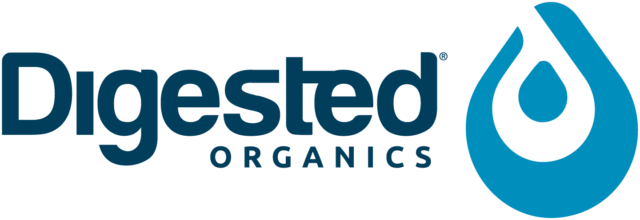Smart feed management before and during times of heat stress can help maintain milk production and your bottom line.
Here are six simple, cost-effective strategies to help mitigate the impact of heat stress on your herd.
1. Consider ration changes
Ration adjustments can help combat heat stress. Your nutritionist can help identify and implement adjustments for the most significant return on investment.

Your nutritionist might start by recommending elevated buffer levels. In addition, potassium helps maintain normal body function. Potassium loss is higher in summer as cows excrete it through sweat.
Hot, summer weather may also cause cows to eat fewer, larger meals, resulting in rumen instability. Adding yeast to the diet can help stabilize the rumen for improved feed efficiency.
You never know exactly when the heat will strike, so plan early and implement changes proactively. The prime time for heat stress is considered 68ºF and above. Order feed supplements two to four weeks in advance of anticipated temperature hikes.
2. Add fat to the diet
Fat is one of the first things to look at when evaluating summer ration adjustments. Nutrient requirements to maintain cow body temperature skyrocket. At the same time, feed intake declines. Adding fat to the diet can help maintain bodyweight and milk production.
However, approach fat additions with caution. If done incorrectly, the added fat may negatively impact milk fat levels. Your nutritionist can help determine what types and levels of fat make the most sense to include in your herd’s diet.
While more fat comes with more cost, adding a few cents per cow per day to the ration may be worth it to maintain milk production and milk fat. Remember, those returns are only possible if you also implement the following cost-effective management practices.
3. Combat secondary fermentation
Summer sun can cause feed in the bunk to heat up, resulting in wild yeast growth, higher feed temperatures, reduced feed quality and lower intakes. Deliver feed in frequent, small batches to prevent it from heating up in the bunk.
The bunker face and large piles of feed knocked down but not fed can experience secondary heating, too. Review bunker management protocols with your team to maintain feed quality.
A common summertime practice is adding water to the ration to keep feed from drying out. However, water can also cause secondary fermentation if silage isn’t stable. Molasses is one alternative to water to help keep feed moist.
Evaluate sprinkler placement around the feedbunk. Run-off from sprinklers can cause or enhance secondary fermentation. Aim sprinklers at the cows, not the feedbunk, and routinely check for leaks.
4. Adjust bunk management
Dry matter intake can decrease by 0.17 pound per cow, on average, for every degree above 68ºF. The good news is: How and when you deliver feed can help cost-effectively improve intakes.

Review group feeding order to deliver the best feed first to pre-fresh and fresh cows who need the most consistency. This feed is the most stable and helps boost intake and rumen consistency. Adjust feed delivery times to ensure feed is consumed during the cooler times of the day, especially if you feed once a day.
Cows are more prone to sorting in the summer, which may dry out the feed in the bunk. Push up feed more frequently to help reduce sorting and feed dry-out. Reviewing feed mixing order can also lessen the chance of sorting.
5. Increase water access
Water requirements to maintain milk production and body temperature increase 10 to 20 percent or more in hot weather. Now is the time to evaluate water access and cleaning protocols in preparation for the uptick in summer water consumption.
Cows need 3 inches or more of linear waterer space per pen. Make sure waterers are easy to access and are in good working condition. A good rule of thumb is to clean waterers twice a week. One of the weekly cleanings should use bleach or another sanitation product to reduce bacteria levels.
The parlor return is one of the most critical areas to ensure water access. Cows are typically thirsty after milking and can get held up before returning to the freestall barn. The waterers in the freestall pens may not be large enough or have enough water pressure to accommodate the high flow of traffic returning from the parlor. Add waterers in the parlor return area to meet the needs of this high-traffic area.
6. Don’t forget about dry cows
While lactating cows will show you easily identifiable signs of heat stress, like reduced feed intake and milk production, you can’t count on the same signs from dry cows. Dry cows are often overlooked because their daily performance typically goes unmeasured.
Yet hot weather can impact dry cows more quickly and severely than lactating cows. Dry cows have an extra layer of fat insulation and retain more heat. Heat stress on dry cows can have long-term lactation performance implications for both the cow and its calf.
The good news is: Dry cow support is very similar to how you support lactating cows. Simply apply the same cooling and feeding management adjustments you’re already implementing in the lactating herd to the dry cows.
We can’t fully avoid heat stress, but you can limit its impact. Use these six strategies to help mitigate the summer heat’s impact on your cows and your bottom line. Work with your local nutritionist to identify strategies that will work for you. ![]()
PHOTO 1: Water is the cheapest feed on your dairy and makes the biggest impact.
PHOTO 2: Your nutritionist can help make ration adjustments before, during and after heat stress for the biggest return on investment impact.
PHOTO 3: Bunk management is a simple way to help increase feed intakes. Courtesy photos.

-
Kevin Dill
- Senior Nutritionist
- Purina Animal Nutrition
- Email Kevin Dill






